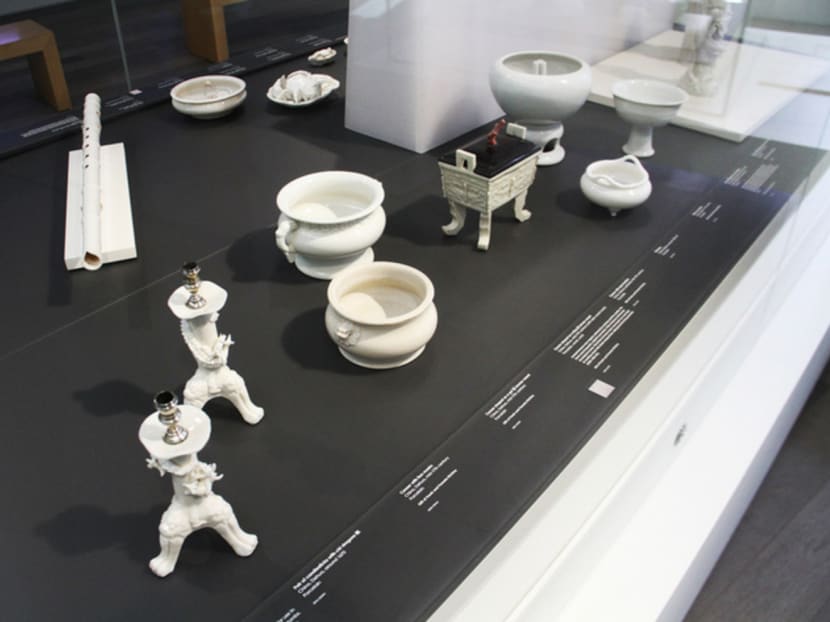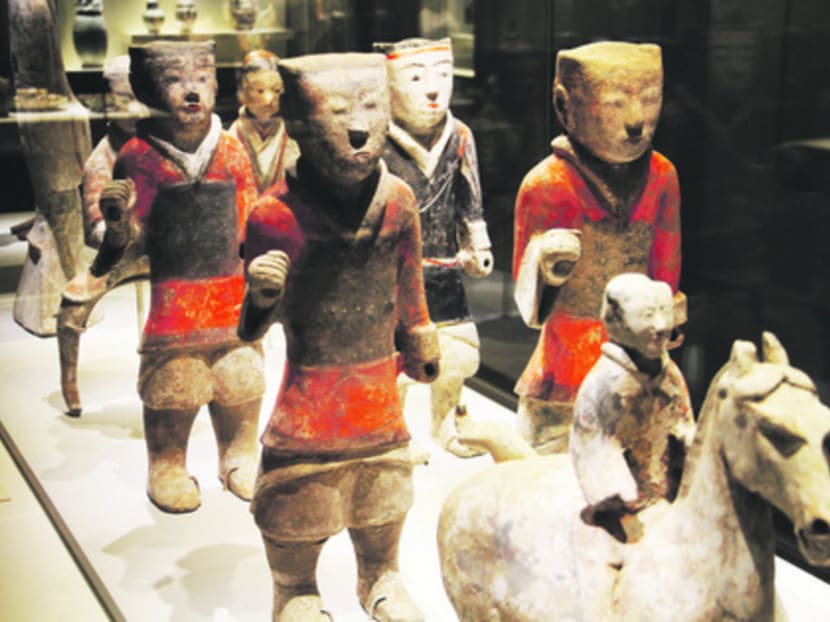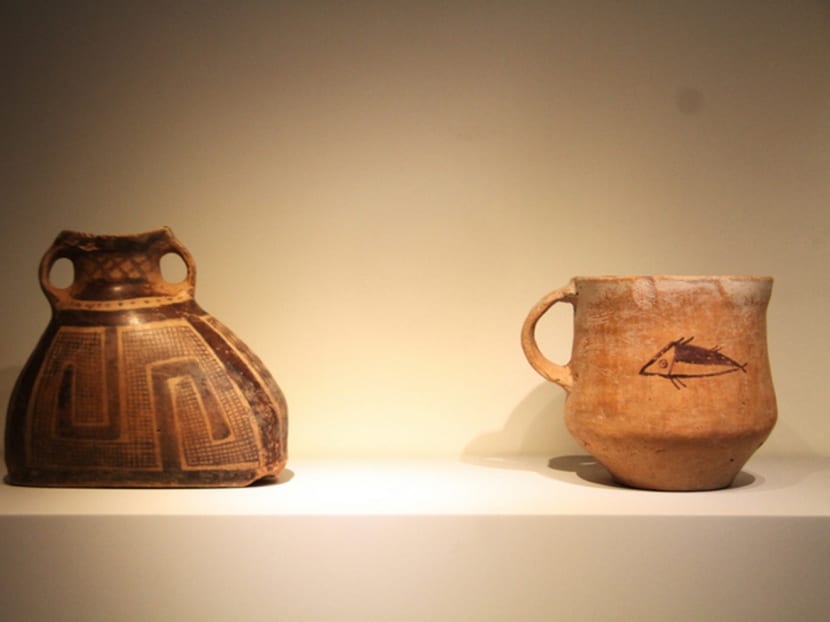Chinese ceramics at Asian Civilisations Museum’s new wing
SINGAPORE — Ceramics have always been present in the stories told at the Asian Civilisations Museum (ACM), but a new, revamped gallery will put the spotlight even more on these beautiful, fragile objects.



SINGAPORE — Ceramics have always been present in the stories told at the Asian Civilisations Museum (ACM), but a new, revamped gallery will put the spotlight even more on these beautiful, fragile objects.
Located on the third floor, which includes the ACM’s new Kwek Hong Png Wing, the new Chinese Ceramics showcase features more than 300 objects from the museum collection, including many that have not been displayed for many years, said museum director Dr Alan Chong.
The artefacts on display collectively present a broad survey of the history of ceramics in its various forms, such as porcelain and earthenware, across China’s different dynasties. These range from tomb ceramics, such as objects found in the tombs of court officials, to exquisite blue and white porcelain from imperial courts. The oldest artefact on display is a cup that dates back to 5,000 to 4,500 BC. Also on exhibit are the museum’s selection of pieces from Dehua in Fujian, which is renowned for its white porcelain.
While the museum has always presented ceramics, the new section aims to present these as art forms. “(We wanted) people to look at ceramics as objects of beauty in themselves. These things have an eternal beauty that can be appreciated even after thousands of years,” said Dr Chong, who described these as “practical objects” that nonetheless have strong aesthetic qualities.
And these qualities can be vastly different. On one hand, for instance, you see burial ceramics from the Han Dynasty during the first century, a procession of horses and riders (taken from different tombs) that accompany the dead in the afterlife. These may remind visitors of the famous terracotta warriors, although their smaller sizes were “deliberate responses to the grandiosity of the first emperor,” said Dr Chong.
On the other hand, there are also the more familiar blue and white porcelain objects, such as those created during the transition period between Ming and Qing Dynasties during the 17th century. That period saw an explosion of creativity and also signaled one of the regular export booms that ceramics have had in China — after all, after silk, ceramics were the most popular exports from the country, Dr Chong pointed out.
Through the years, the art of ceramics has evolved. Conan Cheong, curator for the ceramics gallery, pointed out how a realistic object depicting a rice granary from the Han Dynasty is in contrast with stylised granaries in the shape of pots during the Song Dynasty in the 11th century.
The objects on display also reflect the influences on Chinese culture through the years. The appearance of camel objects and drinking cups during the Tang Dynasty in the ninth century is linked to the glory days of the Silk Road and the time when tea-drinking became fashionable. Elsewhere, one can spot a ceramic piece in the unusual shape of a leather water bag used by horsemen from the Liao Dynasty in the ninth century (from the nomadic Khitan people who controlled northern China and were the rivals of the Song dynasty during that time).
The special section on Dehua porcelain— which was developed from donations by collectors Frank and Pamela Hickley — further underscores the idea of influence. The Fujian province is known for its almost luminous white porcelain pieces and became popular during the 16th and 17th centuries. The unique, creamy tone of the objects’ glaze captured the imagination of the West so much so that the term “blanc de chine” was coined in Europe during the 19th century.
The idea of who influenced who takes a playful turn in one shelf featuring figurines made in China during the 17th century, which featured Dutch pipes or Dutch families. While such objects were sent to Europe, Dr Chong pointed out that these were also collected by the Chinese. At the same time, “there was a taste in Europe for Chinese gods like Guanyin”.
The Chinese Ceramics Gallery is the latest to open at the museum, which will see a few more new galleries opening in the next couple of years as part of its revamp, including a gallery on jewellery slated for next year.
The Chinese Ceramics Gallery is located at the third level of the Asian Civilisations Museum, 1 Empress Place. For more info, visit http://acm.org.sg/







